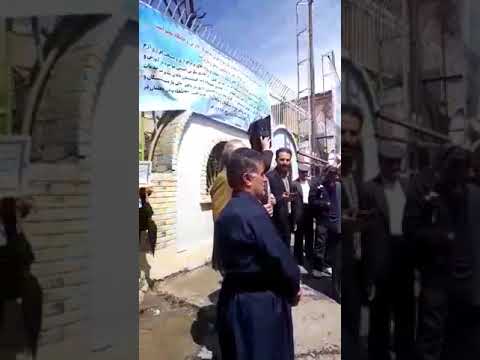For those who live and work in Iran, the realities of daily living include trying to get paid your meager wages and finding that they being withheld. These periods can last for months and in some cases, over two years have passed and there are still no wages being paid from these companies or even the regime itself.
In light of this reality, teachers, both current and retired, from throughout the country gathered for protests and demonstrations in cities around Iran. Despite the threats of physical violence and arrest, these teachers still spoke out, because they wanted their voices heard, not only for themselves, but also for their students.
The demands of the teachers included living wages and benefits for themselves, but also an educational system that allowed for all Iranian children to be educated without discrimination. Many Iranian children are not able to take advantage of the educational system, because it is not properly funded by the regime, and due to the fact that a large number of children are being lumped into the workforce as child labor. There are no laws against child labor in Iran, despite the fact that the international community has shifted away from child labor in large part.
These demonstrations were met with a physically repressive response from the regime’s security forces, notably the Islamic Revolutionary Guard Corps (IRGC). Hundreds were injured in various cities, and in Tehran, a woman’s eye was torn out from repeated blows to the head.
Iran’s regime fears any type of uprising, so their response is to attempt to repress any who attempt to speak out regarding social issues in Iran, let alone the political ones. The teachers also called for the release of those activists and political prisoners who have been jailed for participating in previous protests and demonstrations.
However, the teachers themselves are not alone in their protests against the regime and its policies. Various industries, from oil and gas to agricultural, have all participated in protests and demonstrations throughout Iran. During December and January, the protests grew to an unprecedented scale, sending shock waves through the regime as they attempted to repress these efforts of the Iranian people to speak out. While there is some organizational effort being done by the Iranian resistance inside Iran, namely the PMOI/MEK, the large numbers at these gatherings speaks to the fact that the issues inside Iran are not limited to political beliefs alone.
In fact, the way that the regime rules Iran is tearing at the social and cultural fabric of the Iranian people. If the recent round of protests is any indication, the Iranian people may be reaching their breaking point with this regime.
The teachers who were speaking out are just one group calling for change, but they are part of a larger swell of calls for change. The regime and its mullahs seem unwilling or unable to adapt to the changing needs of their people and are unwilling to be good stewards to the resources of the country.
